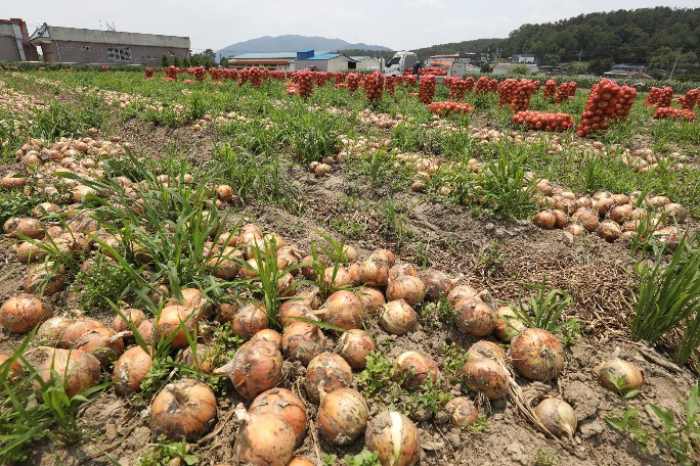Economy
Korea suffers from foreign workers shortage in farming
Workload has more than tripled as the busy farming season came earlier in 2022 than in previous years
Aug 11, 2022 (Gmt+09:00)
2
Min read
Most Read
S.Korea's LS Materials set to boost earnings ahead of IPO process


Samsung Heavy Industries succeeds autonomous vessel navigation


Samsung shifts to emergency mode with 6-day work week for executives


Hankook Tire buys $1 bn Hanon Systems stake from Hahn & Co.


Korean battery maker SK On expects business turnaround in H2



South KoreaŌĆÖs agricultural product prices are expected to increase this year as the agriculture industry is suffering chronic labor shortages. Despite the governmentŌĆÖs efforts to expand temporary foreign workers, the industry sees serious labor demand-supply imbalance.┬Ā┬Ā
Farm workers are in higher demand in August this year as the harvest season comes earlier than in previous years due to the persistent torrential rain in Korea and the upcoming Chuseok holiday from Sept. 9 to 12. ┬Ā
ŌĆ£We still need a huge workforce although the government designates temporary foreign workers to each farm. The labor cost per foreign worker soared from 140,000 won ($107.5) before COVID-19 to the current 200,000 won a day,ŌĆØ a potato farmer in Pyeongchang County, Gangwon Province said. ┬Ā┬Ā
ŌĆ£Workload has more than tripled ŌĆō three workers are doing 10 workersŌĆÖ jobs on average,ŌĆØ said an onion farmer in Hampyeong County, South Jeolla Province. ŌĆ£New workers from Vietnam and Thailand have significantly low work proficiency these days, and they're not able to handle the jobs for the busy season,ŌĆØ the farmer added. ┬Ā
ŌĆ£WeŌĆÖre suffering from the rising labor costs of foreigners, as well as their increasing requirements such as setting air conditioners at workplaces,ŌĆØ said an official from National Agricultural Cooperative Federation (NongHyup) in Taebaek City, Gangwon Province.
The Korean government designated 12,330 seasonal workers, foreign workers who temporarily work during busy farming seasons, to 114 local governments across the country during the first half of 2022. The government will assign 7,388 seasonal workers during the second half, according to Ministry of Justice and Ministry of Agriculture, Food and Rural Affairs.┬Ā┬Ā
The country has ramped up the foreign temporary workforce from 3,612 in 2019 as COVID-19 accelerated young workersŌĆÖ leaving rural areas and discouraged foreign workers to migrate to Korea.┬Ā ┬Ā┬Ā
The Korean government grants eligibility for seasonal workers to marriage migrants, Korean descents with foreign nationalities, short-term foreign workers and foreigners supported by the seasonal workforce partnership program between their homeland and Korea.
By Kyeong-Je Han and Mi-Kyoung Lee┬Ā
hankyung@hankyung.com
Jihyun Kim edited this article.
More to Read
-
 Tech, Media & TelecomS.Korea to ease internship visa rules for foreign talent ┬Ā
Tech, Media & TelecomS.Korea to ease internship visa rules for foreign talent ┬ĀAug 05, 2022 (Gmt+09:00)
3 Min read -

-
 Labor unionHankook Tire sees increasing threat from combative labor union's demands
Labor unionHankook Tire sees increasing threat from combative labor union's demandsJun 22, 2022 (Gmt+09:00)
3 Min read -
 AutomobilesKumho Tire, labor union in tug of war over international plants
AutomobilesKumho Tire, labor union in tug of war over international plantsApr 08, 2022 (Gmt+09:00)
3 Min read
Comment 0
LOG IN


